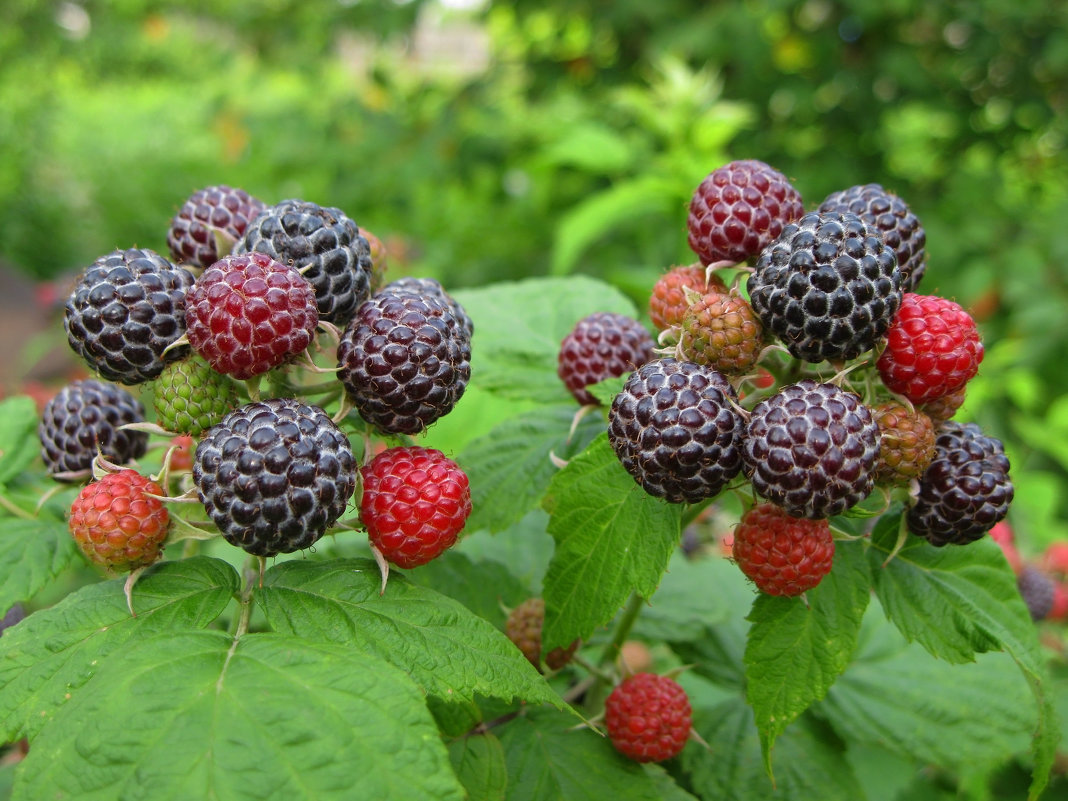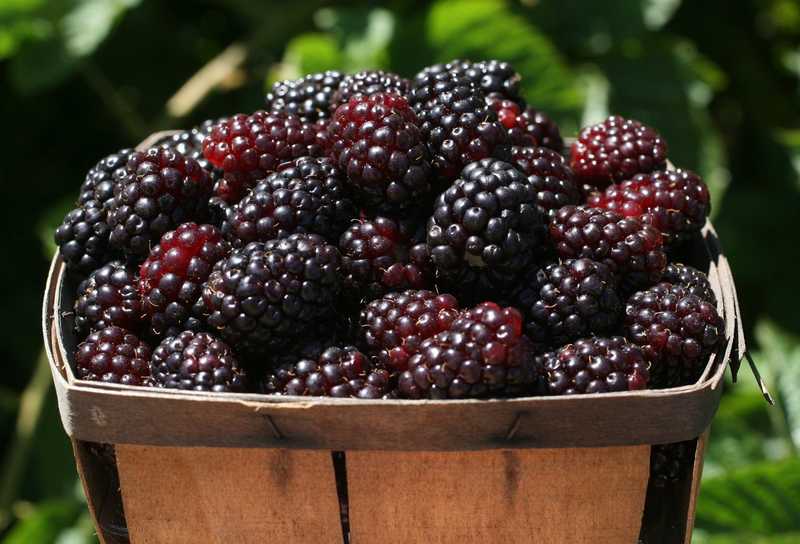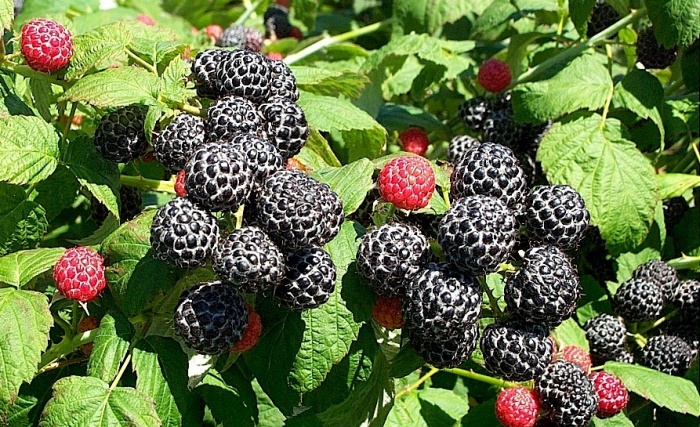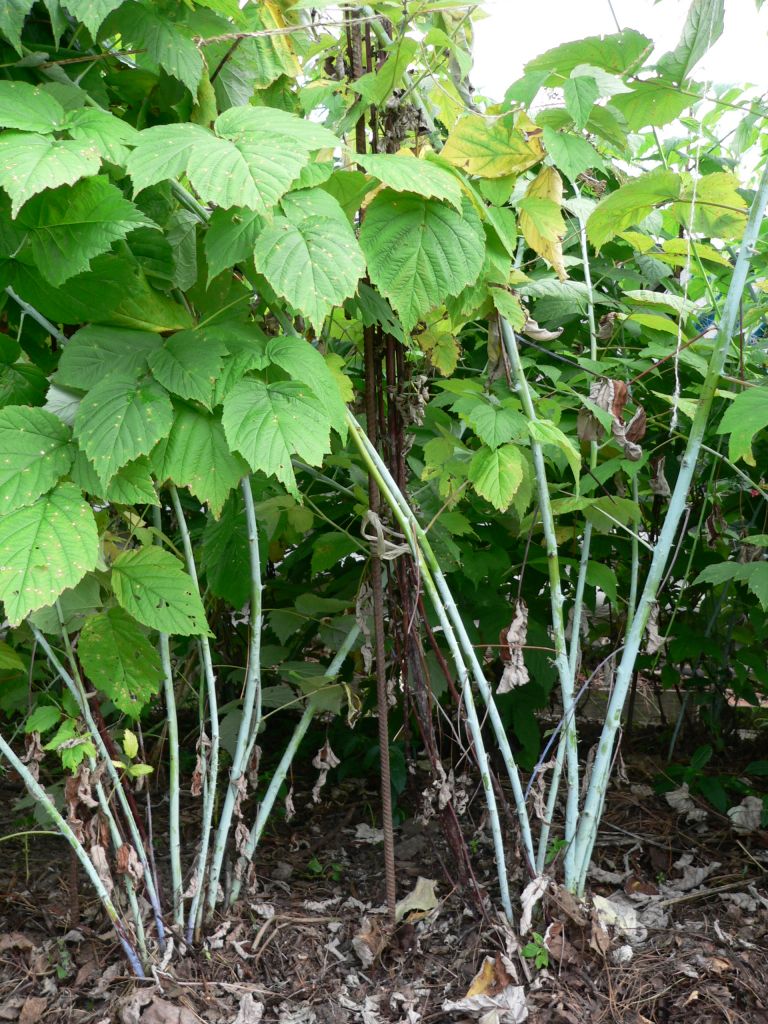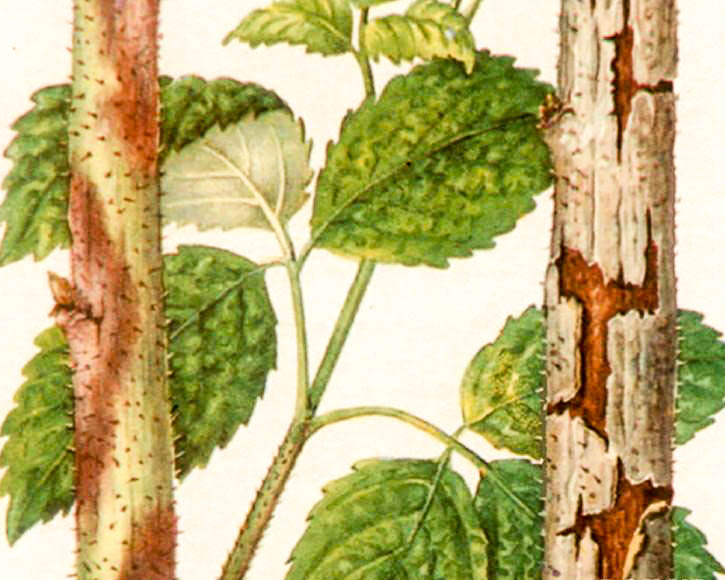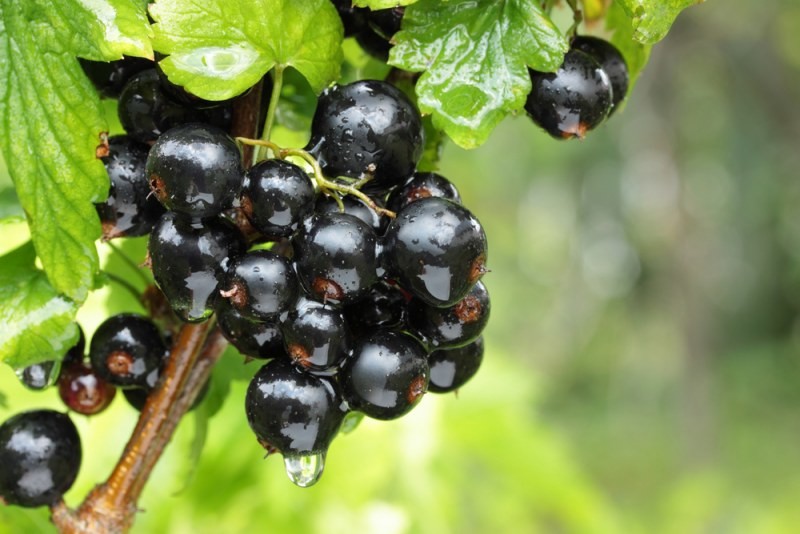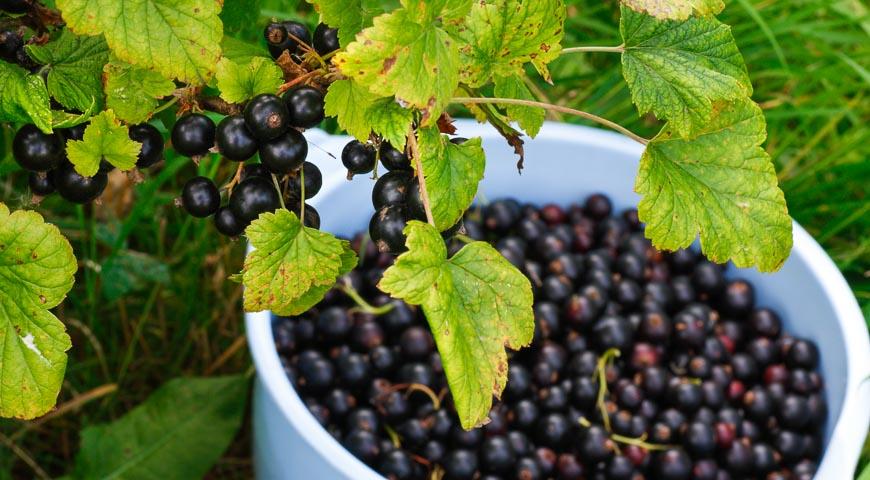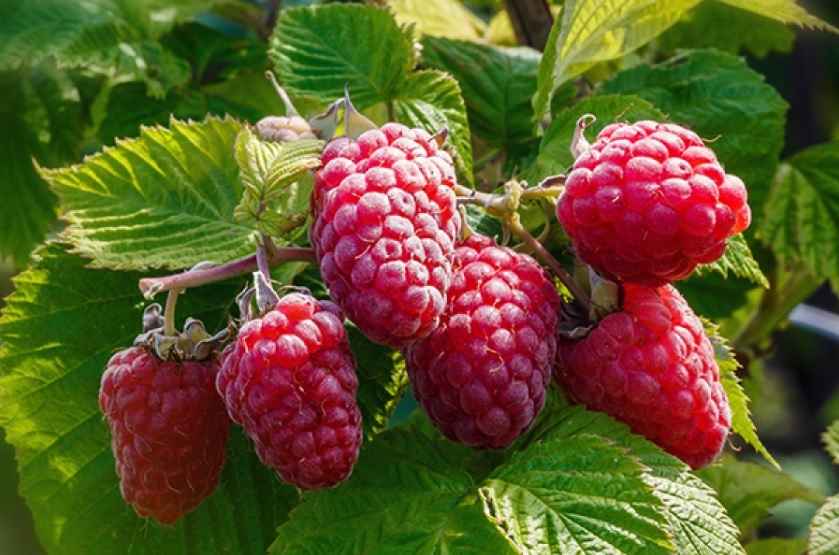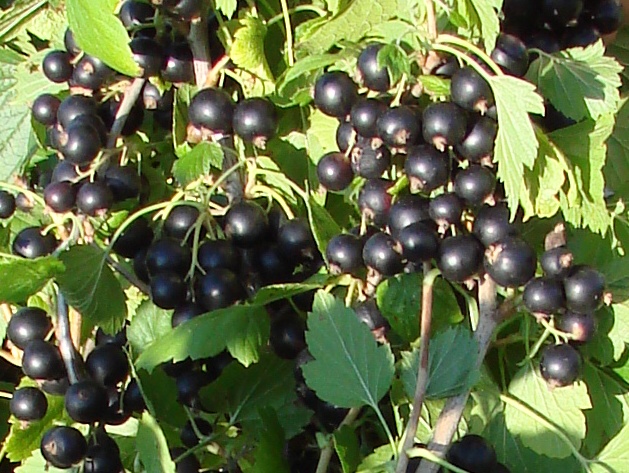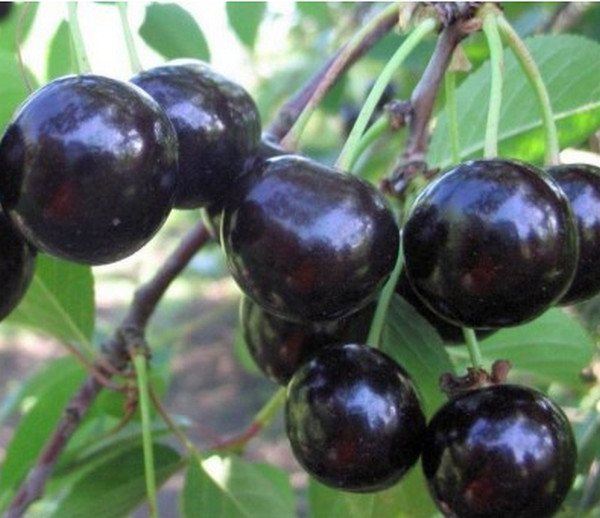Content:
Black raspberries (or blue raspberries) look very much like blackberries, which is why these berries are often confused. The main difference between shrubs lies not only in the taste that their berry has, but also in the appearance of the plants themselves. In addition, the ripe raspberry fruit is removed from the stalk without effort, while the blackberry fruit can only be plucked together with the receptacle.
To date, domestic and foreign breeders have bred a large number of varieties of black raspberries, each of which has its own characteristic features and is quite worthy of more detailed consideration.
Blue raspberry varieties: a brief description
Black, or blue, raspberries come in many different varieties. Among the most promising and interesting are Boysenberry, Bristol, Gift of Siberia, Cumberland, Litas, Prince, New Logan, Ugolyok, etc. It is worth considering some of them in more detail.
Boysenberry
The main characteristic of Boysenberry is the amazing taste of the berries. It is the sweetest and most aromatic black raspberry species.
The cultivation of berries is carried out mainly for the purpose of personal consumption, since the yield of the variety is not too high. Raspberry ripening occurs closer to the beginning of August. The fruits have a bluish tinge to a dark cherry hue, weighing from 10 to 12 g.
Boysenberry Blue Raspberries get along best with the regular red raspberries next door.
It is not difficult to take care of such a raspberry tree. The only thing is that it will definitely need to be covered for the winter.
Bristol
The Bristol variety is considered by many gardeners to be the best type of black raspberry in terms of care and cultivation. Raspberry Bristol gives a high yield. Bushes can grow to a height of three meters and necessarily require a garter. The berries are round and have a bluish bloom. From one bush during the season, on average, it turns out to grow up to 5 kg of ripe fruits. Cultivation of this blue raspberry is permissible in any type of soil. In addition, Bristol black raspberry, as described, tolerates significant temperature changes well.
Gift of Siberia
Raspberry Dar of Siberia has one significant difference from many other varieties of berries. It is characterized not only by excellent yield, but also by unrivaled endurance. The variety is medium late. The shrub itself is tall and rather spreading, practically does not form shoots. The plant has hard and short thorns throughout the stem, which somewhat interfere with proper care.
A remarkable property of the shrub is resistance to pests and various diseases. The berries of the Dar Sibiri variety are small enough - their weight varies from one and a half to two grams, but they are quite dense and have a pronounced dessert taste.
Cumberland
Raspberry Cumberland is an early variety. The shrub is quite powerful, has thorns. The fruits are round in shape and rich in black (the blue, characteristic of some of these varieties, is absent).
The productivity of the shrub is quite high - at least 4 kg from one bush. On average, about 15 berries ripen on each branch. It is easy to grow this variety, since it does not require a garter, winter insulation and is resistant to insects and pests.
Coal
The name of the raspberry Ugolek speaks for itself. The berries of this variety are large, broad-pointed and black. The bush grows up to 2.5 meters and does not produce overgrowth. The berries taste sweet and sour. They firmly adhere to the branch and do not crumble, even if they are late in picking for several days. As for the yield, this indicator is very high for this variety - from 5 to 8 kg of berries from one bush.
Care
Blue raspberries, whatever the name of the variety, requires mandatory care. Otherwise, you can forget about a decent harvest.
Landing
Planting black raspberries does not differ significantly from other types of this shrub. The place should be sunny and protected from the wind. There are no special requirements for the soil; the main thing is that it is sufficiently loose and fertile. There is an important contraindication regarding black-fruited shrubs. They should not be planted in the place of nightshade crops and in areas where red raspberries previously grew.
It is important to observe the distance between individual bushes: within one row - at least one meter, and between rows - at least two meters.
Fertilizers
As practice shows, without fertilization, raspberries, in principle, can exist. Black varieties are no exception. The only point that should be taken into account in the event that a decision is made to refuse feeding the plant is that you should not expect a good harvest. Some varieties may even barely turn blue before the end of the season. In this regard, it is not recommended to neglect fertilizers in the most urgent way.
The first feeding is done at the end of the flowering of the shrub. An infusion of manure or bird droppings is used. It is recommended to add a kilogram of wood ash and 50 g of superphosphate to a bucket of infusion prepared in a 1: 6 ratio. A similar fertilizer can be used with the next feeding - during the ripening period of berries.
Reproduction
Breeding black raspberries is not as difficult as someone might think. Usually, reproduction is carried out by means of apical layers. In the fall, after the fruiting period of the shrub comes to an end, the long shoots should be tilted and laid tops in the grooves prepared in advance, and then covered with earth. From above, the resulting structure is carefully covered with sawdust and straw. By the spring, the cuttings will have taken root and will produce shoots that can be used as seedlings.
Black raspberries can also be propagated by seeds. But germination of seeds is a rather long-lasting process, so few gardeners use it. In addition, when grown with seeds, it is not always possible to maintain the variety of the plant.
Pruning
When talking about caring for black raspberries in spring, the first thing to mention is pruning your plants. At the end of winter, dried and frozen branches must be removed.
The procedure is repeated in June. At this time of the year, the upper part of the shoot is pruned - it is removed at a height comparable to the growth of a person. In addition, the raspberry tree is thinned out.
And finally, in the fall, before the start of frost, two-year-old shoots are removed. Only young branches should be left. At the same time, they should also be shortened a little - to a height of about half a meter.
Disease and pest control
Black raspberries are a useful product for human health. But as such, the plant is to a certain extent susceptible to a number of diseases and the negative effects of harmful insects (although this effect is somewhat lower than that of ordinary red raspberries).
Sometimes black raspberries are affected by purple spot and verticillary wilting, a viral disease that does not respond to treatment. Faced with the latter disease, even at an early stage, it will not be enough to cut off the branches that show the corresponding symptoms with the naked eye. Affected bushes will need to be uprooted and burned.
To avoid contamination of black raspberries by verticillium wilting, shrubs should be planted at least ten meters from the raspberry tree with red berries. In a rainy summer, it is equally important to ensure high-quality soil drainage in order to prevent the development of fungi.
Of the pests, only the raspberry beetle is a serious danger to black raspberries. To combat it, it is enough to treat the bushes with a two percent solution of Nitrofen.
In our country, black raspberries for this period of time are not as widespread as in America or Europe. But recently, an increasing number of fans are starting to appear.
